Has Ireland's dual registration plate changed the way we buy cars?
While many head off on annual holidays this July and August, spare a thought for the car dealers of Ireland as it is one of their busiest times of the year.
In 2013, the government introduced a new dual registration system so, rather than new cars being registered only in January, motorists could now purchase a brand new car in either January or July. The rationale for introducing this change was because of the extreme front-loading of sales in January and the impact this had on government taxation, working capital and job stability.
So how has the mid-year plate changed how motorists buy?
We thought we would start off by briefly looking at the level of July car sales from 2011 and look at how that has changed up until 2016.
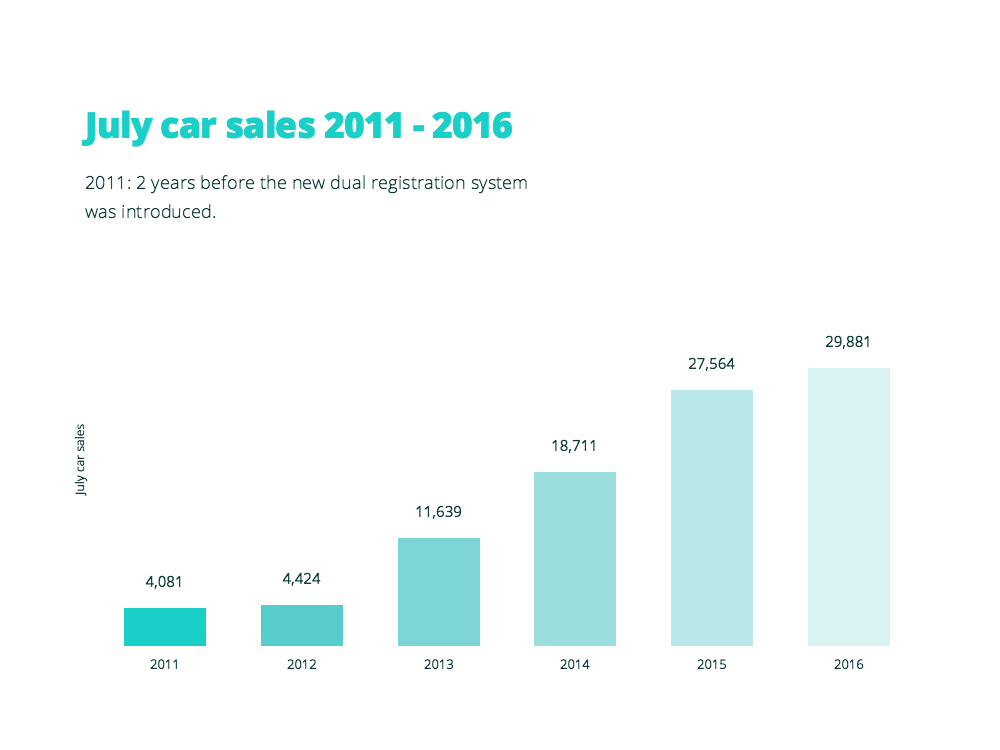
Data source: beepbeep.ie
In July 2011, two years before the new dual registration plate was introduced, only 4,081 new cars were sold that year. July sales only increased by 8% in 2012 but in 2013, the first year the new dual registration came into effect, there was a YoY increase of 163%. Since 2013, the industry has witnessed a YoY increase of 61%, 47% and 8% respectively.
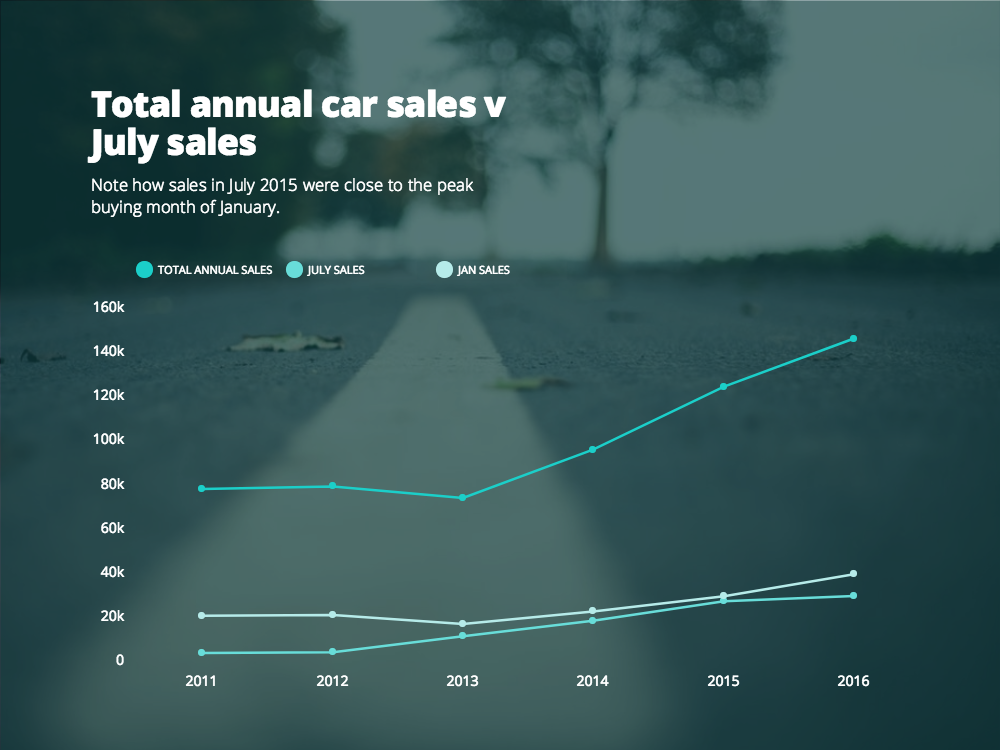
January has always been the peak buying month for new cars. In July 2015 however, car sales in that month were almost on a par with January sales in that same year. July car sales have gone from representing just 5.6% of total annual sales in 2012 (the year before the new dual registration was introduced) to a share of 20.4% in 2016.
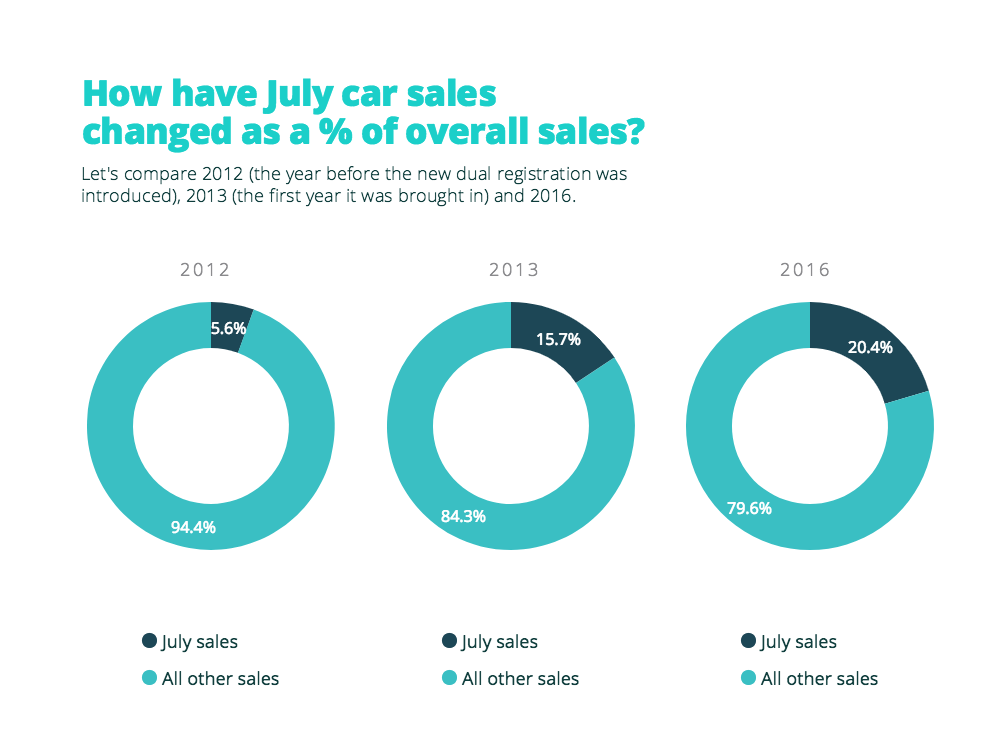
Looking at July car sales as a proportion of all annual sales, there has been a significant increase, from 5.6% in 2012 to 20.4% last year.
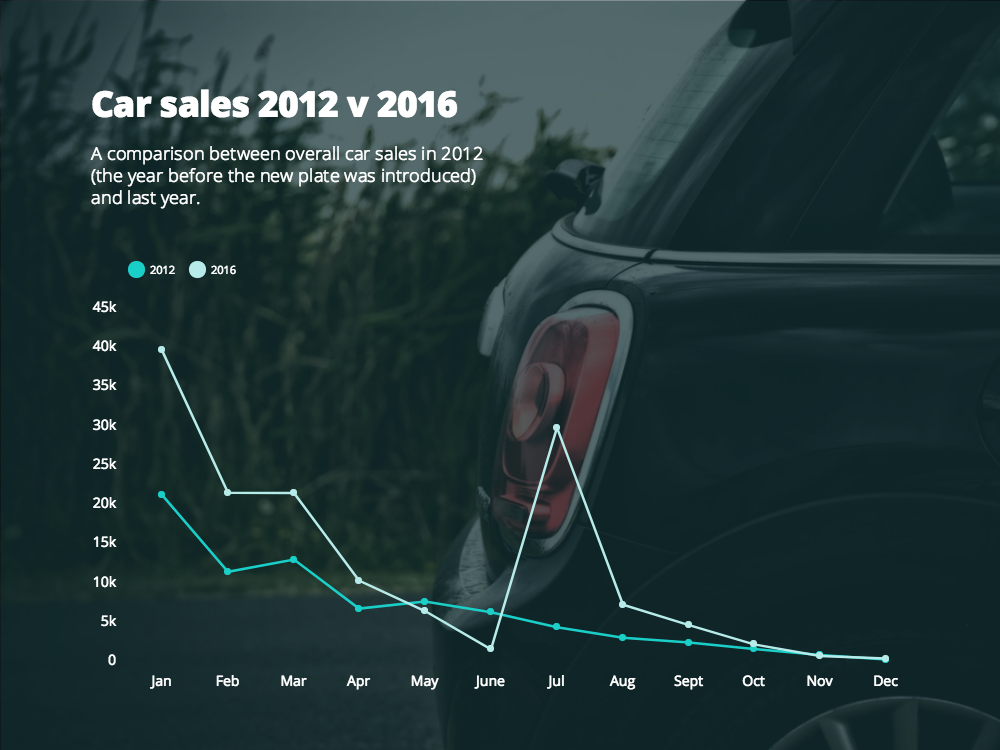
Data source: beepbeep.ie
Pre-2013, the pattern of declining sales month-on-month each year to December was inevitable. Comparing 2012 to 2016 sales, there is a notable second 'spike' mid year.
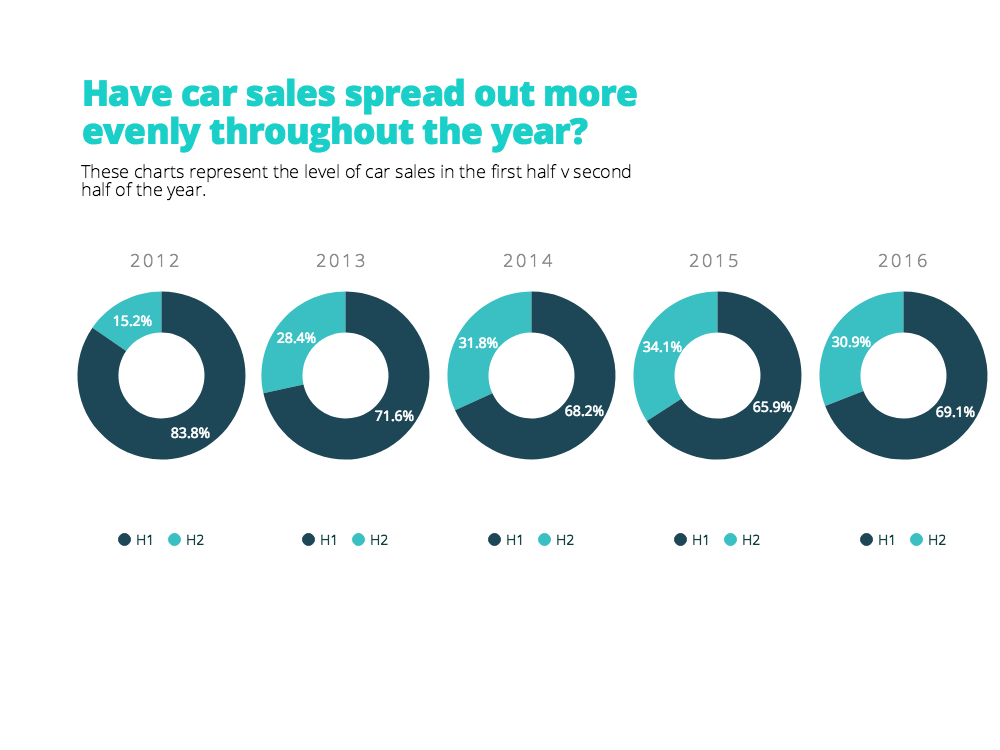
Data source: beepbeep.ie
While January still remains the most popular month to buy a new car, July has shown an incremental increase in its percentage of total car sales since the launch of the new dual registration, although that incremental increase slowed slightly last year. In 2012, the year before the new registration was introduced, the ratio of new car sales in January v July was 5:1. While in 2016, the ratio has narrowed to 3:1.
In Summary
It is clear that the dual registration system has had a positive impact in terms of July sales but it is still early in its development to fully understand whether it has had a significant effect on the buying habits of the Irish consumer.
Will we see the eventual scenario of July car sales surpassing January figures? Anecdotal evidence would seem to suggest that consumers have greater levels of disposable income in July in comparison to January so maybe this outcome is inevitable?
Will we see the trend of July car sales as a percentage of total annual sales incrementally increasing again at the end of July once the figures are released?
From a recruitment perspective, the dual registration has had a hugely beneficial impact. New car sales have a direct impact on employment in the sector; the more new cars are sold, the more employees are required to sell them, service them and prepare them.
Traditionally, car sales were extremely seasonal and as a result, job stability was less certain. The industry has become far more attractive to new entrants as they see it as representing a far more stable environment without the excessive front-loading of activity we have witnessed in previous years.
Will we see the eventual scenario of July car sales surpassing January figures? Anecdotal evidence would seem to suggest that consumers have greater levels of disposable income in July in comparison to January so maybe this outcome is inevitable?
Will we see the trend of July car sales as a percentage of total annual sales incrementally increasing again at the end of July once the figures are released?
From a recruitment perspective, the dual registration has had a hugely beneficial impact. New car sales have a direct impact on employment in the sector; the more new cars are sold, the more employees are required to sell them, service them and prepare them.
Traditionally, car sales were extremely seasonal and as a result, job stability was less certain. The industry has become far more attractive to new entrants as they see it as representing a far more stable environment without the excessive front-loading of activity we have witnessed in previous years.
Share this article
Sign up to blog alerts
Previous posts

